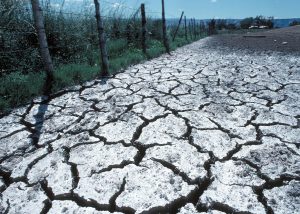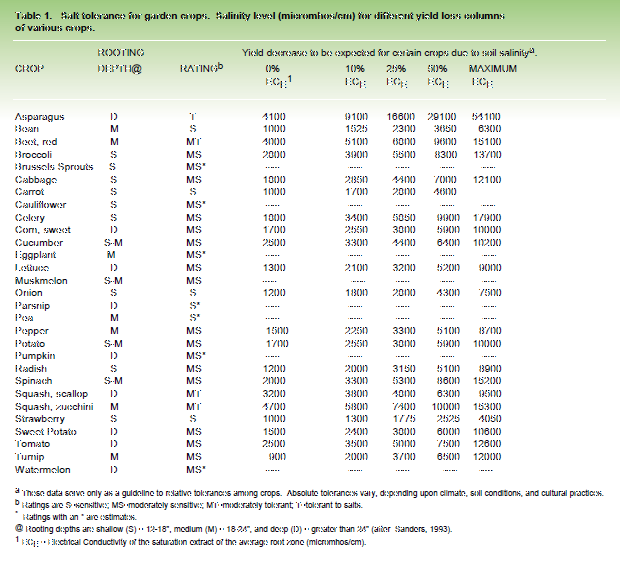
Nutrients enter plants, first by being dissolved into water, then the nutrient ladened water passes through the walls of the plant’s roots into the the plant where the nutrients are used by the plant.
The water flows in the direction of the lower salt content. In most plants in soils, there is a higher concentration of minerals and salts in the roots than in the soil, so the water flows from the soil to the plant’s roots. However, if the salt levels are high in the soil, the water does not pass between the roots and the soil, or worse, it passes from the plant to the soil. This is why the symptom of high salts in the soil is similar to the symptoms of drought. In both cases the plant is failing to grow or grow well because it isn’t getting enough water.
Interestingly different plants have different sensitivity to salts in the soil. Peas and spinach, for example, are very sensitive to salt. Asparagus is very tolerant to high levels of salt. There are a number of ways to manage high levels of salt in your garden. First you need to know how much salt is in your soil. This is available on any standard soil test. Then you can see if the plants which are not thriving in your garden are likely to be affected by the level of salt in your soil.

It is also very important to water regularly and thoroughly. Other approaches are covered in the article listed below.
References